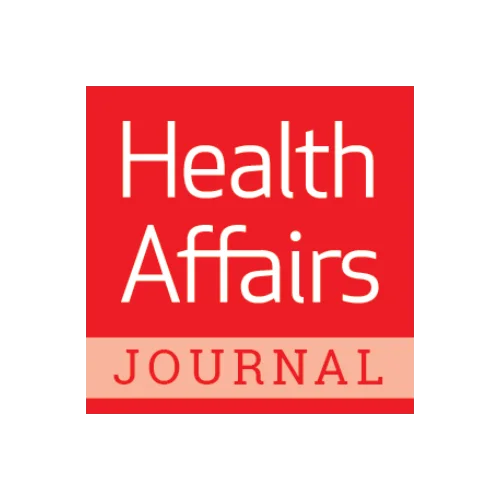PBJ research report and related news:

The Role Of Real Estate Investment Trusts In Staffing US Nursing Homes
REIT investment was associated with average relative staffing increases of 2.15 percent and 1.55 percent for licensed practical nurses (LPNs) and certified nursing assistants (CNAs), respectively.
After the three largest REIT deals were excluded, REIT investments were associated with an overall 6.25 percent relative decrease in RN staffing and no changes in LPN and CNA staffing. Larger deals resulted in increases in LPN and CNA staffing, with no changes in RN staffing; smaller deals appeared to replace more expensive and skilled RN staffing with less expensive and skilled staff.
Braun, Robert Tyler, et al. “The Role of Real Estate Investment Trusts in Staffing US Nursing Homes.” Health Affairs, vol. 42, no. 2, Health Affairs (Project Hope), Feb. 2023, pp. 207–16. https://doi.org/10.1377/hlthaff.2022.00278.

Robust ownership data could drive healthier nursing home deals: study author
Greater insight into potential buyers is just one possible benefit of rules that would make publicly available more information about private equity and real estate investment trust ownership of nursing homes.
That was the take Monday from two academics who have spent the last several years researching investment activity in nursing homes and other aging services sectors. Professors David Stevenson of the Vanderbilt University School of Medicine and Tyler Brau of Weill Cornell Medical College, co-authors of the first paper examining REIT influence on staffing, joined the LeadingAge Policy Update call Monday.
The duo’s Health Affairs paper was the first to examine how REIT ownership was tied to changes in staffing, finding that per-day registered nurse staffing can decline by as much as 6.25% in two to three years after initial investment in a skilled nursing facility.
The authors called that process labor-intensive, noting that they had to cull figures from multiple sources and tie them back to specific nursing homes in other data sources.
Marselas, Kimberly. “Robust Ownership Data Could Drive Healthier Nursing Home Deals: Study Author.” McKnight’s Long-Term Care News, 21 Mar. 2023, www.mcknights.com/news/robust-ownership-data-could-drive-healthier-nursing-home-deals-study-author.

SNF staffing shifts after REIT acquisition, study shows
Steady increases in licensed practical nurse and certified nursing assistant hours per resident day in skilled nursing after REIT acquisition could mean that there is some kind of “substitution effect” taking place, where facilities are substituting more expensive skilled labor for less skilled, inexpensive labor, according to David Stevenson, PhD, a professor of health policy at the Vanderbilt University School of Medicine, and R. Tyler Braun, PhD, an assistant professor of population health sciences at Weill Cornell Medical College.
The researchers spoke with LeadingAge members Monday to share their findings, published in Health Affairs, based on their use of a novel database of REIT investments in the United States, which they used to compare caregiver staffing in nursing homes in which REITs were and were not invested in.
“What we see is on the aggregate [is] increases of about 2.15% in licensed practical nurse hours per resident, and then we see about a 1.55% increase in hours per day for certified nursing assistants, and then we see about a 3.31% decrease for registered nurses,” [Braun] said.
He noted that those numbers were not significant in the aggregate, but “if you were to actually extrapolate that out by year and look at the changes by year and not just in a pre/post period, it can actually get a little more telling. After excluding the largest acquisitions, we can see that nursing homes had, on average, about a 6.25% per resident day decrease in staffing following reinvestment, [by a REIT],” [he] said. “So this may suggest that larger deals are more likely to increase LPN and CNA staffing.”
Gaivin, Kathleen Steele. “SNF Staffing Shifts After REIT Acquisition, Study Shows.” McKnight’s Senior Living, 21 Mar. 2023, www.mcknightsseniorliving.com/home/news/business-daily-news/snf-staffing-shifts-after-reit-acquisition-study-shows.

REIT Ownership of Nursing Homes Linked to Changes in Clinical Staffing Patterns
Real estate investment trust (REIT) investment in nursing homes has been linked to an increase in some clinical staff hours per resident day – specifically a 2.15% and 1.55% percent bump in licensed practical nurse (LPNs) and certified nursing assistant (CNAs) hours, respectively.
Registered nurse (RN) hours, on the other hand, decreased 6.25% in the two to three years following REIT investment.
That’s according to a new study published in Health Affairs on Wednesday; to date, there has been no peer-reviewed evidence evaluating the impact of REIT investment on nursing home staffing, according to authors of the study.
Generally, larger deals resulted in increases to LPN and CNA staffing, and no changes to RN staffing. Smaller deals appeared to replace RN staffing hours – more expensive, skilled care – with less skilled, less expensive clinicians, authors wrote.
Stulick, Amy. “REIT Ownership of Nursing Homes Linked to Changes in Clinical Staffing Patterns.” Skilled Nursing News, 26 Jan. 2023, skillednursingnews.com/2023/01/reit-ownership-of-nursing-homes-linked-to-changes-in-clinical-staffing-patterns.

REIT ownership linked to decline in RN staffing, increases in LPN, CNA use
Nursing homes, after being purchased by a real estate investment trust, are likely to see increases in licensed practical nurse and certified nursing assistant staff hours per resident day of 2.15% and 1.55%, respectively. Also, registered nursing staffing can decrease by as much as 6.25% in two to three years after the investment.
That’s according to a study released Wednesday ahead of print by the journal Health Affairs.
“REIT nursing homes may substitute relatively inexpensive LPN and CNA care in place of more expensive RN care,” the authors said. “More investigation is needed to clarify how changes in staffing after REIT investment affect nursing home quality of care.”
Gaivin, Kathleen Steele. “REIT Ownership Linked to Decline in RN Staffing, Increases in LPN, CNA Use.” McKnight’s Senior Living, 27 Jan. 2023, www.mcknightsseniorliving.com/home/news/business-daily-news/reit-ownership-linked-to-decline-in-rn-staffing-increases-in-lpn-cna-use.


